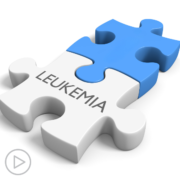How Does the CAR T-Cell Therapy Process Work?
How Does the CAR T-Cell Therapy Process Work? from Patient Empowerment Network on Vimeo.
What are the steps involved in CAR T-cell therapy? Expert Sarah Meissner provides an overview, discussing the T-cell collection, manufacturing, and infusion process.
Sarah Meissner, RN, BSN, BMTCN, is a Blood and Marrow Transplant and Related Donor Search Coordinator at the Colorado Blood Cancer Institute.
See More from The Care Partner Toolkit: CAR T-Cell Therapy
Related Resources:

CAR T-Cell Therapy Care Partners: What Questions Should Your Ask the Healthcare Team? |

CAR T-Cell Therapy Care Partners | What Do You Need to Know About the Process? |

|
Transcript:
Katherine:
Let’s shift the conversation a bit to learn more about how the CAR T-cell therapy process works. Sarah, would you walk us through the typical path?
Sarah Meissner:
Of course. So, it is a pretty protracted treatment. It starts off when the patient is determined to be a CAR T-cell candidate.
At that point, we are looking at getting testing to confirm that eligibility so based off of disease process as well as performance status and organ function. So, there are a series of tests that are done, and then those are sent to the insurance company in order to obtain authorization for treatment. After we have received the authorization, then the patient consents for treatment with their physician where we review the plan of care, side effects, risks, benefits, all of that. And then the T-cell collection takes place. So, this is a one day, outpatient procedure. We put a temporary catheter into the patient that goes into their neck and we use this to collect the T cells.
So, the patient gets hooked up to an apheresis machine, which kind of looks like a dialysis machine. And it filters the patient’s blood.
It takes blood out of the patient’s body, goes into the machine into a giant centrifuge where the blood is separated into different densities. And then, the T-cells are extracted from the density of the blood where it is and then, taken out and collected in a bag. This is a three- to four-hour process usually and then, when we are finished, we are left with a bag of T cells. Those T cells are then shipped off to a manufacturing site for the specific pharmaceutical company that is going to be manufacturing the patient’s T-cells. And that can take anywhere from three to eight weeks depending on the product.
During this time period, most patients have an active blood cancer that is going to need some treatment while we’re waiting for those cells. So, it is something we call bridging therapy. They may or may not receive that depending on what’s going on in their case.
After the T cells are manufactured, they get shipped back to our center as a frozen block. And we have the patient come back in. They get a few days of chemotherapy. We call this lymphodepleting chemotherapy. So, this isn’t chemo that’s meant to treat the patient’s disease but to suppress their immune system so that when we put these CAR T cells back into their body, the patient’s immune system doesn’t fight them off before they can do their job. So, that’s typically two or three days depending on which products the patient is getting and which disease is being treated.
Then, they get a few days off and then, that frozen block of cells is brought out of the freezer, brought to the patient, thawed in a water bath that looks kind of like a hot dog cooker.
Katherine:
That’s an odd image.
Sarah Meissner:
There is water in there that’s heated to body temperature and the frozen block of cells is thawed.
And then, those cells are infused into the patient’s body and go to work to fight the patient’s cancer.










